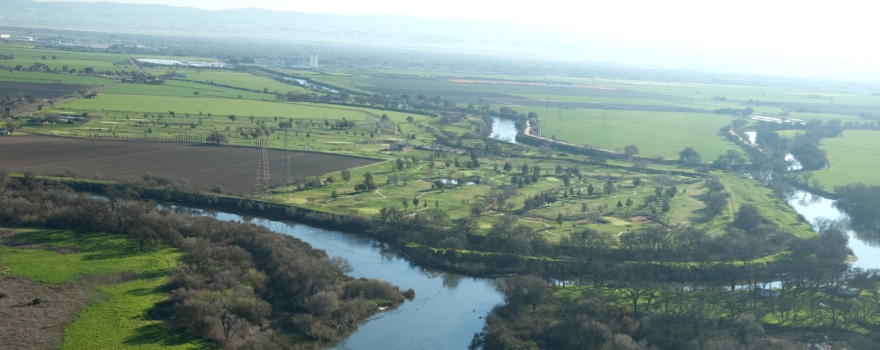Scientists, science-policy experts, and stakeholders gathered for a two-day workshop on November 1-2, 2016 at UC Davis to better understand how collaborative science is being managed, funded, and communicated in several high-profile ecosystems around the country.
The program was designed to identify common themes and differences in the approaches being used in the California Bay-Delta, Chesapeake Bay and Watershed, Coastal Louisiana, Great Lakes, Greater Everglades Ecosystem, and Puget Sound.
 This Proceedings Report combines information found in the Science Enterprise Workshop Advance Briefing Paper, including an overview of each system, with abridged transcripts of the presentations, panel discussions, and audience questions and answers. The report is organized according to the workshop agenda and integrates slides and graphics used during the program. The contents of this report, including individual sections, can also be downloaded in pdf format (SEW_Complete Proceedings Day 1 & 2) and videos from the workshop can be viewed online (www.deltacouncil.ca.gov/youtube-page).
This Proceedings Report combines information found in the Science Enterprise Workshop Advance Briefing Paper, including an overview of each system, with abridged transcripts of the presentations, panel discussions, and audience questions and answers. The report is organized according to the workshop agenda and integrates slides and graphics used during the program. The contents of this report, including individual sections, can also be downloaded in pdf format (SEW_Complete Proceedings Day 1 & 2) and videos from the workshop can be viewed online (www.deltacouncil.ca.gov/youtube-page).

 The Science Enterprise Workshop was co-hosted by U.S. Geological Survey and the Delta Stewardship Council.
The Science Enterprise Workshop was co-hosted by U.S. Geological Survey and the Delta Stewardship Council.
The Science Enterprise Workshop, held on November 1- 2, 2016, at Davis, California, brought together scientists and science-policy experts from across the country to share information about how collaborative science is funded, managed, and communicated in several high-profile and complex ecosystems – the California Bay-Delta, Chesapeake Bay and Watershed, Coastal Louisiana, Great Lakes, Greater Everglades Ecosystem, and Puget Sound.
The workshop was conducted at a critical time for the California Bay-Delta. In the Delta, “every decision becomes unimaginably complex,” because virtually any change intended to improve a public value is perceived to degrade some other value. The Delta is not unique in this regard. At the Science Enterprise Workshop, participants had the opportunity to hear from a wide-range of experts highlighting how different regions have developed science management mechanisms to support managers who are working on improving long-term health and viability of the nation’s high-profile ecosystems.
Science refers to information gathered in a rational, systematic, testable, and reproducible manner (Lackey 2009). Although there is no definition specific to the California Bay-Delta, the 2013 Delta Science Plan encompasses all of the following activities:
- Research
- Data collection and monitoring
- Data management and accessibility
- Modeling
- Analysis and synthesis
- Independent scientific peer review and advice
- Science communication
 The workshop started with presentations on the structure and organization of the science programs by science leaders from Coastal Louisiana, Puget Sound, the Chesapeake Bay and watershed, the Greater Everglades, the Great Lakes, and the California Bay-Delta.
The workshop started with presentations on the structure and organization of the science programs by science leaders from Coastal Louisiana, Puget Sound, the Chesapeake Bay and watershed, the Greater Everglades, the Great Lakes, and the California Bay-Delta.
Scientists, officials, and policy makers discuss a multitude of topics regarding how science can be organized, coordinated, funded, and communicated to stakeholders.
- Dr. Clifford Dahm, Lead Scientist, Delta Stewardship Council
Dr. Clifford Dahm then closed the two-day workshop with his thoughts, noting that this event was important because it brought together science and policy makers, which is critical to long-term success. It’s also been an opportunity to learn about six complex, very interesting systems that participants can take away information from to help everyone do science in their own sites, he said.
List of participants and other workshop credits.










 PRESENTATION: Impact of regulations on science
PRESENTATION: Impact of regulations on science PRESENTATION: Program development and resource allocation related to the Gulf Coast Ecosystem Restoration Council
PRESENTATION: Program development and resource allocation related to the Gulf Coast Ecosystem Restoration Council PRESENTATION: Perceptions of science in the San Francisco Bay Area
PRESENTATION: Perceptions of science in the San Francisco Bay Area


